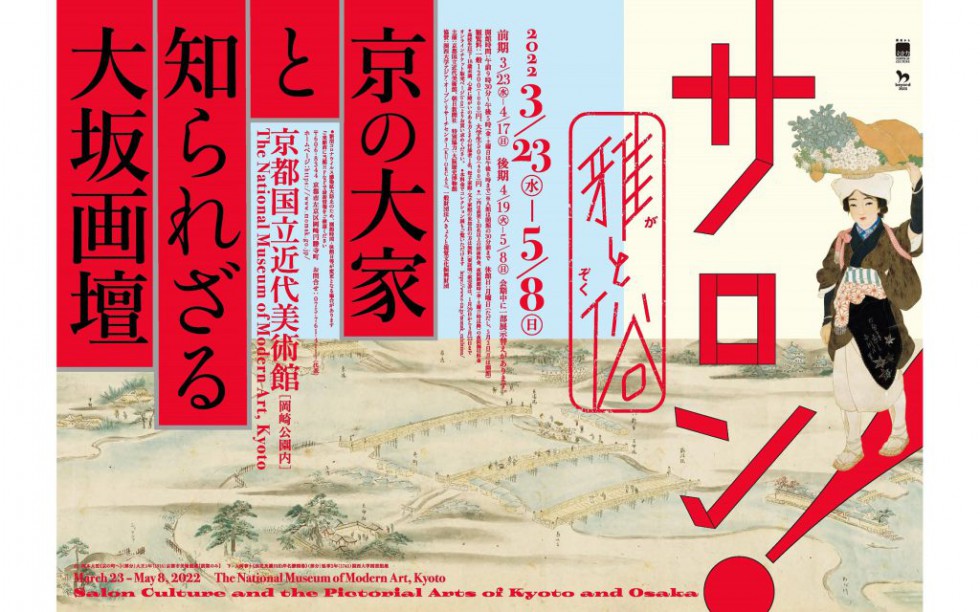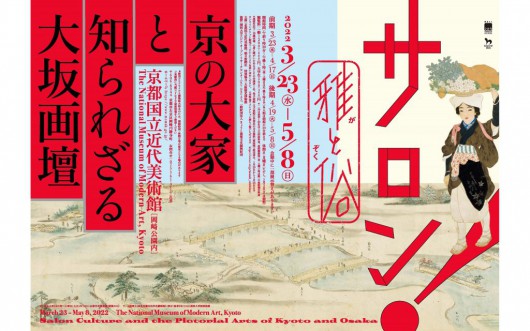Event
Date:
March 23 (Wednesday) -May 8 (Sunday), 2022
*Some works will be replaced with others while the exhibition is in session.
First Period : March 23–April 17
Second Period : April 19–May 8
Hours:
9:30AM–5:00PM
*Fridays and Saturdays: 9:30AM–8:00PM
*Admission until 30 min. before closing
Closed:
Mondays, *Exception: May 2
Admission:
Adults: 1,200 yen (1,000 yen)
University students: 500 yen (400 yen)
* Figures in parentheses are groups of 20 or more and Night discount on Fridays/Saturdays after 5 P.M. * High school students and younger are free (with valid ID). * Visitors with disability and one person accompanying them are admitted free of charge. (Please present certificate at the admission.) * Collection gallery exhibition is available with this ticket.
https://www.momak.go.jp/English/exhibitionArchive/2022/446.html
Venue
The National Museum of Modern Art, Kyoto
https://www.momak.go.jp/English/
Access:Kyoto 26-1, Okazaki Enshoji-cho, Sakyo-ku, Kyoto, 606-8344 JAPANJapanTel:075-761-4111
Overview
In the Edo Period (1603-1868), Kyoto was distinguished by a host of highly individualistic painters. These included literati painters such as Ikeno Taiga and Yosa Buson; Maruyama Okyo, who garnered popularity for works that he were painted from life; and Goshun, who studied with Buson and Okyo, and went on to establish his own lyrical style. At the same time, in Osaka, there were figures such as Kimura Kenkado and Okada Beisanjin, who worked primarily as merchants, and countless writers, who were devoted to painting as a pastime. Whether samurai, merchant, painter, Confucian scholar or Buddhist priest, these people were part of an expansive network. As suggested by the fact that Kimura Kenkado, who is seen as a central figure in the Osaka art world, studied with Taiga, these personal interactions extended to Kyoto. There were also many painters in Osaka whose style was descended from the Maruyama-Shijo school of Okyo and Goshun. And there were painters such as Nishiyama Hoen, an Osaka-based artist who painted from life and studied with Goshun’s younger brother, Matsumura Keibun, whose work grew out of the close relationship between Kyoto and Osaka. This tight circle of learned people might best be described as a salon culture. In addition, water transport, which made use of the Yodo River, fostered exchanges between the artists, and played an important part in shaping this rich salon culture. Many cultural figures from other parts of Japan also assembled in Kyoto and Osaka, attracting venerable authorities such as Uragami Gyokudo, Tanomura Chikuden, and Tani Buncho to the salon. In addition to introducing some of the most important works by artists who were active between the Edo Period and modern times in Kyoto and Osaka, this exhibition focuses on the salon culture that emerged as a result of the relationship between these figures. Based on joint research we have conducted in the past three years with the British Museum, SOAS University of London, and Kansai University Open Research Center for Asian Studies, this large-scale exhibition sets out to survey the art of Kyoto and Osaka from an international perspective.






